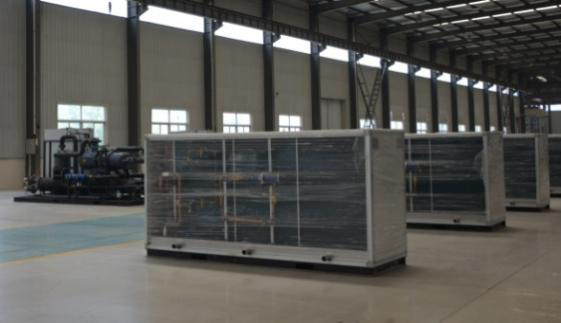Mines are an industrial field deep underground, and their operation has not only contributed greatly to the energy industry, but also accompanied a large amount of energy waste. However, the intervention of modern technology has brought new possibilities, especially the regeneration and utilization of mine return air waste heat, which not only contributes to environmental protection, but also takes an important step on the path of sustainable energy utilization.
Source of waste heat from mine return air
During the operation of the mine, the ventilation system is the key to ensuring the safety of miners and the normal operation of the mine. The ventilation system introduces fresh air, removes harmful gases, and also generates a large amount of waste heat. These residual heat mainly comes from the operation of the fan and the heating of the air during the ventilation process.
The principle of utilizing waste heat from mine return air

The operating principle of a heat exchanger: The recovery of waste heat is usually achieved through a heat exchanger. A heat exchanger is a device that can transfer heat energy. It exchanges heat between the hot air discharged from the mine and fresh air, reabsorbing the previously lost energy. This process not only effectively improves the energy efficiency of the ventilation system, but also provides renewable energy for subsequent production processes.
Equipment that utilizes waste heat: The waste heat recovered through a heat exchanger can be applied in multiple aspects. On the one hand, waste heat can be used to heat the air inside the mine, improving the warmth of the working environment. On the other hand, waste heat can also be used to heat equipment that requires thermal energy in the production process, such as boilers, heating furnaces, etc. This approach not only improves the efficiency of energy utilization, but also reduces the dependence of mines on external energy.
The injection of sustainable energy
The regeneration and utilization of mine return air waste heat is not only to improve energy efficiency, but also to promote the development of sustainable energy. Through rational design and the introduction of technological means, mines have become a potential provider of renewable energy. This transformation not only conforms to the pursuit of sustainable energy utilization in modern society, but also injects new development momentum into the mining industry.
Promotion of technological innovation
Intelligent control system: Modern mine return air waste heat utilization systems are often equipped with intelligent control systems. By monitoring real-time data such as temperature, humidity, and wind speed inside and outside the mine, the system can intelligently adjust the recovery and utilization of waste heat to achieve appropriate results. This not only improves the adaptability of the system, but also makes energy utilization more refined and efficient.
Efficient heat exchange technology: As an important equipment for utilizing waste heat from mine return air, the improvement of its technical level directly affects the performance of the system. The application of modern efficient heat exchange technology makes waste heat recovery more thorough and energy efficient. This provides more choices and development space for mining enterprises.
Through the principle of utilizing waste heat from mine return air, we understand that the regeneration and utilization of waste heat from mine return air is not only an effective treatment of energy waste, but also a positive response to sustainable energy development. With the intervention of modern technological means such as heat exchange and intelligent control, the regeneration and utilization system of mine return air waste heat is becoming increasingly mature, injecting new vitality into the mining industry. In the process of continuously solving challenges and innovating, we have reason to believe that the efficient energy regeneration of mine return air waste heat will become an important engine for the development of green mining, bringing a cleaner and more sustainable future to underground mines.







Comment